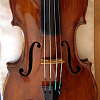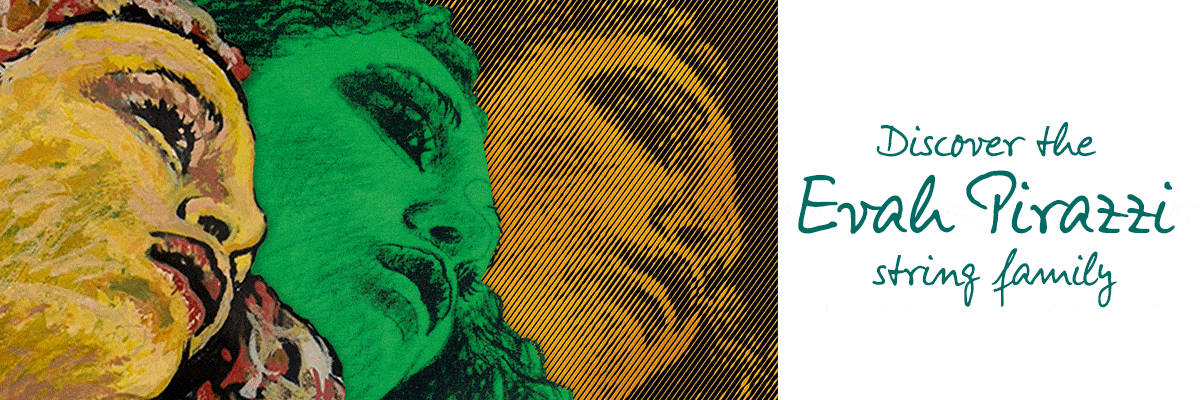
October 2010
V.com weekend vote: Trick, or Treat?
October 29, 2010 11:14
It's Halloween this Sunday in the United States, followed by All Saints Day and Mexico's Day of the Dead.
These holidays aren't celebrated by all, but I find them a nice excuse to listen to scary dark music, dress up, or at least pig out on candy. Traditionally children go door-to-door and say, "Trick or Treat?"
So let's share Halloween-ish music and stories, and please, what is your preference, trick, or treat?
For your All Hallow's Eve enjoyment, "Le Streghe" (Witches' Dance) by that fiendish devil, Nicolo Paganini, played by German violinist Wolfgang Marschner. (BTW all Suzuki Book 2 students ought to hear this version, from which the abbreviated Suzuki-book version comes!)
V.com weekend vote: Have you tried playing 'scordatura' on your instrument?
October 23, 2010 16:40
Have you ever heard this word, "scordatura"?
It means that you tune your violin, viola or other stringed instruments, to other pitches than those your would normally tune to. Lara St. John talked about scordatura this week in our interview: Mozart asks that the viola be tuned a half-pitch higher on all strings for his Sinfonia Concertante. Few actually play it this way, though maybe the St. Johns will start a new trend, with Scott St. John trying it for their new Mozart recording -- and liking it!
We find another example of scordatura in Mahler's Symphony No. 4, where in the second movement Mahler asks that the concertmaster play a solo on a fiddle tuned a tone higher. Mahler seemed to be going for an eerie, off-kilter effect, here, judge for yourself by watching the video below the vote.
My question to you is, have you ever tried playing your instrument scordatura (and I don't mean just playing it when it's really out of tune!) If so, what did you play?
Here is the second movement of Mahler's Fourth Symphony:
V.com Weekend Vote: What is the best way to build your technique?
October 15, 2010 23:12
I'm talking about building good technique.
Some people swear by scales, and I know at least one who believes etudes are the answer. "Review" is a Suzuki mantra for keeping old pieces alive and well, and that also builds technique. Then there's the challenge of something new.
A diet of all these things might be the best way. Which do you think is the most effective ingredient for building a sound technique?
V.com weekend vote: When you buy new recorded music, in what format do you prefer to buy it, CD or digital download?
October 8, 2010 13:15
The world's a-changin' and that means that we often get our music in different ways than before. Yes, I am old enough that I owned vinyl records, cassettes, and there were even a few eight-track tapes in the house.
Last summer, I visited the listening library at Northwestern University -- a beautiful place where I had a work-study job for four years while getting my music degree. I loved being near all those recordings: stacks and stacks of vinyl, rows of CDs, boxes of reel-to-reel tapes, even some cassettes. Imagine, a library that's a temple to recorded sound and to the storage thereof. It smells a certain way, feels a certain way. But do we even need such a thing any more?

Stacks and stacks of vinyl, baby.

A turntable, remember these?
I love a big vinyl record, and I love that it comes in a huge cardboard sleeve that just begs to be covered with art and story. CDs can be a smaller version of the same, with booklets inside, or foldouts with photos and art and words. I like being able to hold such things in my hand.
At the same time, what could be more convenient than being able to store a week's worth of recorded sound in a gizmo that fits in the palm of your hand? These days, I'm not even sure if it's possible to buy new recorded vinyl, especially classical music. The main options are CD or digital download.
What are your thoughts on the matter? And if you were to buy some new recorded music today, in what form would you buy it, CD or digital download?
V.com weekend vote: Which is your favorite Mozart violin concerto?
October 1, 2010 15:41
Over the course of two days last week, I heard five performances of Mozart violin concerti at the International Violin Competition of Indianapolis.
For the classical finals, contestants could choose a Mozart or Haydn concerto, and five of six finalists chose to play Mozart. Of those, only two concerti were represented: Concerto No. 3 in G and Concerto No. 5 in A.
The most-often played Mozart concerto are the last three: Concertos No. 3, 4, and 5. The first two are played and studied less often. Personally, I play the last three, and it's hard to pick favorites!
I was relieved to discover that people seem to be taking that unnecessary, not-in-the-urtext ricochet bowing out of the first movement (m. 64) of the G major. Not one performer did it! Yay! That bowing basically ruined that concerto for me because it was on the first page, and it never went well during auditions.
The D major No. 4 concerto has a wonderfully bouncy feel, but then who can argue with that opening of the A major concerto, which is a perfectly-composed, miniature love story to violin sound.
Which do you like best, and why?
More entries: September 2010
Violinist.com is made possible by...
Dimitri Musafia, Master Maker of Violin and Viola Cases
Johnson String Instrument/Carriage House Violins
Subscribe
Laurie's Books
Discover the best of Violinist.com in these collections of editor Laurie Niles' exclusive interviews.

Violinist.com Interviews Volume 1, with introduction by Hilary Hahn

Violinist.com Interviews Volume 2, with introduction by Rachel Barton Pine






